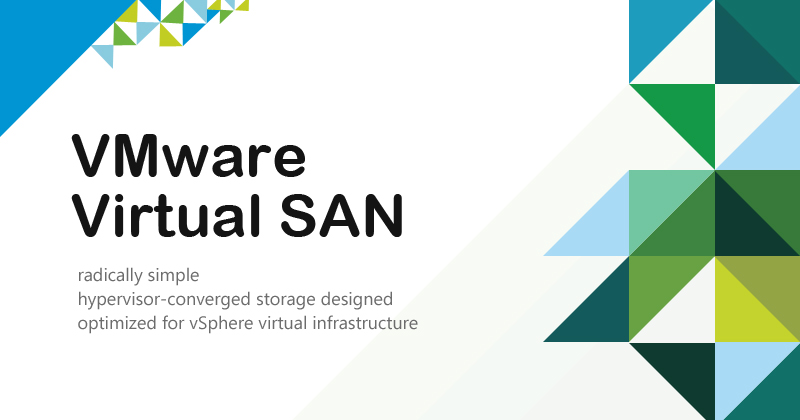In this post we will be covering few important points need to be considered from network perspective before VMware VSAN deployment.
Supported Network Interface Cards
In a VMware Virtual SAN hybrid configuration, Virtual SAN supports both 1 GB and 10 GB Network Interface Cards. If you have 1 GB Network Interface card installed on ESXi host than VMware requires this NIC to be dedicated only for Virtual SAN traffic. If a 10Gb NIC is used, this can be shared with other network traffic types. It is advisable to implement QoS using Network I/O Control to prevent one traffic to claim all the bandwidth. Considering the potential for an increased volume of network traffic between the hosts to achieve higher throughput, for Virtual SAN All Flash Configuration VMware supports only 10 GB Network Interface Card which can be shared with other network traffic types.
Teaming Network Interface Cards
Virtual SAN supports Route based on IP-hash load balancing, but cannot guarantee improvement in performance for all configurations. IP-hash performs the load balancing when Virtual SAN traffic type is among its many network traffic types. By design, Virtual SAN network traffic is not designed to load balanced across teamed network interface cards. NIC Teaming for VMware Virtual SAN Traffic is a way of making the Virtual SAN traffic network high available, where standby adapter take over the communication if primary adapter fails.
Jumbo Frame Support
VMware Virtual SAN supports Jumbo Frame. Even if use of Jumbo frame reduce CPU utilization and improve throughput, VMware recommends to configure jumbo frame only if the network infrastructure already supports it. As vSphere already use TCP segmentation offload (TSO) and large receive offload (LRO), Jumbo frame configured for Virtual SAN provides limited CPU and performance benefits. The biggest gains for Jumbo Frames will be found in all flash configurations.
Multicast Requirement
Multicast forwarding is a one-to-many or many-to-many distribution of network traffic. Rather than using the network address of the intended recipient for its destination address, multicast uses a special destination address to logically identify a group of receivers.
One of the requirements for VSAN is to allow multicast traffic on the VSAN network between the ESXi hosts participating in the VSAN cluster. Multicast is being used in discovering ESXi host and to keep track of changes within the Virtual SAN Cluster. Before deploying VMware Virtual SAN, testing performance of switch being used for Multicast is also very important. One should ensure a high quality enterprise switch is being used for Virtual SAN multicast traffic. Virtual SAN health services can also be leveraged to test Multicast performance.
Summary of network design considerations
- Virtual SAN Hybrid Configuration support 1 GB and 10 GB network.
- Virtual SAN All Flash Configuration support 10 GB network.
- Consider implementing QoS for Virtual SAN Traffic using NIOC.
- Consider Jumbo frame for Virtual SAN traffic if it is already configured in network infrastructure.
- Consider NIC team for availability / redundancy for Virtual SAN traffic.
- Multicast must be configured and functional between all hosts.
I hope this is informative for you. Thanks for Reading, be social and share it on social media if you feel it is worth sharing it. Happy Learning … 🙂
